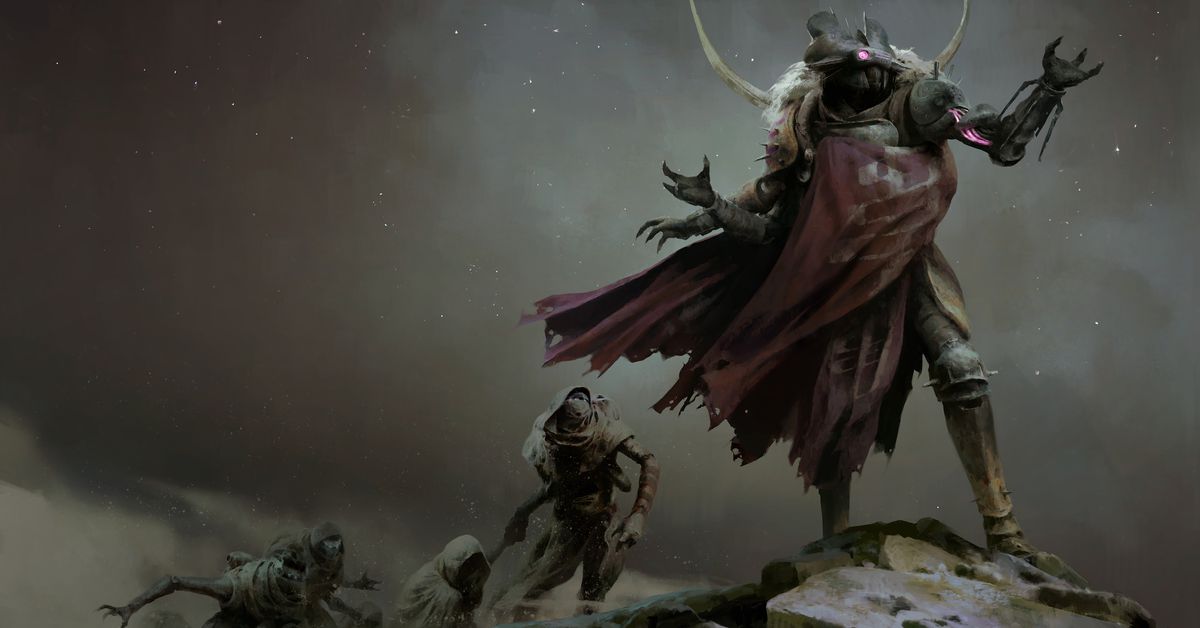Since 2017, Destiny 2 players have had to contend with a game that by and large still silos off the most colorful aspects of its fiction in dense lore books; story moments are relegated to dialogue in the comms channel, the explosive defeat of Big Enemies, and the cameo appearance of NPC models who by and large just stand there, deliver exposition, then transmat out of the game space before we move on to the next weekly space wizard chore.
This is a problem that’s obviously on the minds of Destiny 2’s creators.
In Luke Smith’s 2019 blog post at Bungie.net, “Director’s Cut — Part III,” the Destiny 2 director lays out his vision for an “evolving” game world.
“We want playing Destiny to feel like you’re playing in a game world with true momentum, a universe that is going somewhere,” he wrote. “A game where things are happening –– not just in terms of new items and activities but also in terms of narrative.”
This situation has been slowly improving since 2019’s Shadowkeep and 2024’s Beyond Light expansions. Lore and story are gradually synchronizing, migrating out of the expansion campaign and into the seasonal content. As we careen toward the next expansion due out in 2024, tentatively called The Witch Queen, the consequences of our actions in each season are starting to stick around.
See, we’ve been busy out in the Solar System. We’ve allied with enemies and made enemies out of former allies. We’ve gone from being avatars of the purest Light to beings that will frequently indulge in Darkness. Now, in Season 14, Season of the Splicer, our Guardian is faced with a never-before-seen challenge: local politics. And the imbroglio we find ourselves caught up in is much more serious than a simple City council election.
[Warning: The following contains spoilers for the narrative beats of Destiny 2: Beyond Light — Season of the Splicer.]
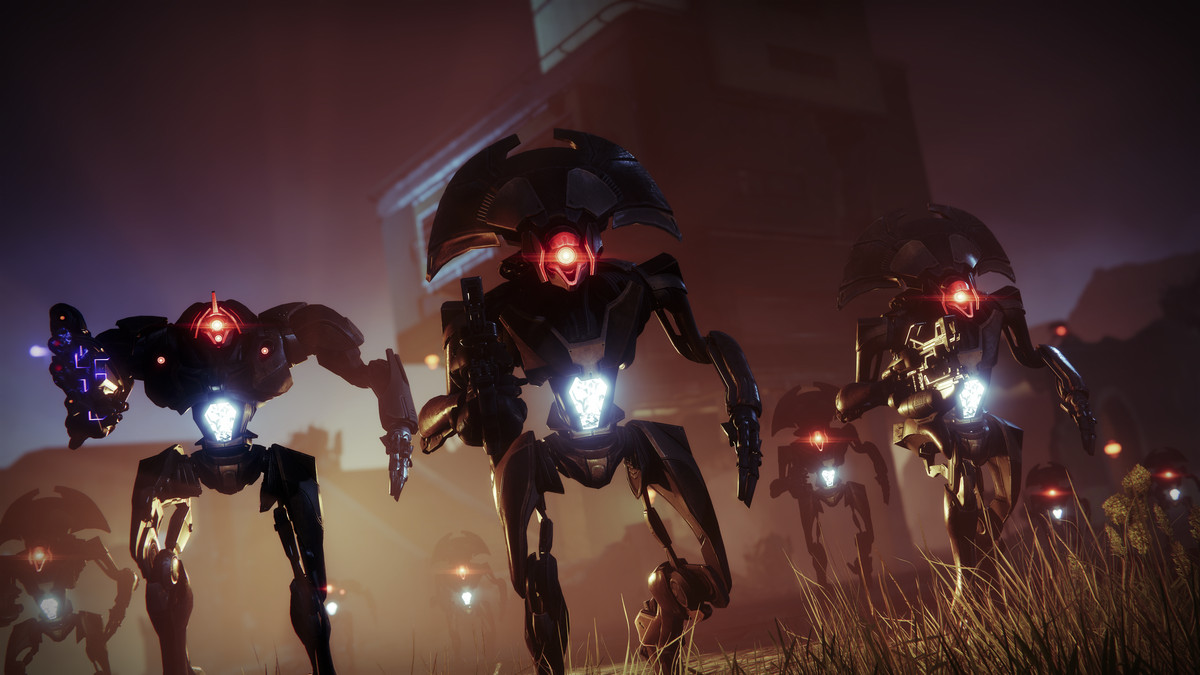
Image: Bungie Inc.
Asylum
In Season of the Splicer, the Vex have taken a page out of The Matrix’s handbook and, through one of their simulations, scorched the sky into an “Endless Night.” Vanguard Warlock Ikora Rey can’t disperse the simulation, even with former Vanguard Commander (and Vex expert… Vexpert?) Osiris’s help, so she deploys our Guardian to Europa. Once there, our Guardian has a rendezvous with Mithrax, the newly-minted Kell of House Light, an Eliksni faction that seeks to coexist with humanity in the Light of the Traveler.
Ikora wants to enlist Mithrax’s help in stopping the Vex because, as he confirms with us, Mithrax is a Sacred Splicer, a class of Eliksni hacker whose specific goal is infiltrating the Vex network. When he begins to decline her plea, citing his duty to protect his people, Ikora does the unthinkable: she offers the House of Light asylum within the City’s walls.
Desperate times call for desperate measures, but this simple gesture almost single-handedly flips the dynamic between humanity and the Eliksni on its head.
Anti-Eliksni dogma is especially strong among Guardians and citizens of the City. Our Guardian has been told for nearly seven years that the Fallen are at once the most pitiful scavengers and most dangerous threat to humanity in the universe. Lore from the post-Collapse period known as the Dark Age describes them as baby-eaters; our experiences have shown them to be either sniveling and cowardly or scheming and thieving. Even when we’ve worked alongside Eliksni in the past, it has always been a begrudging position on the part of the Vanguard, taken in order to defeat a greater enemy down the line.
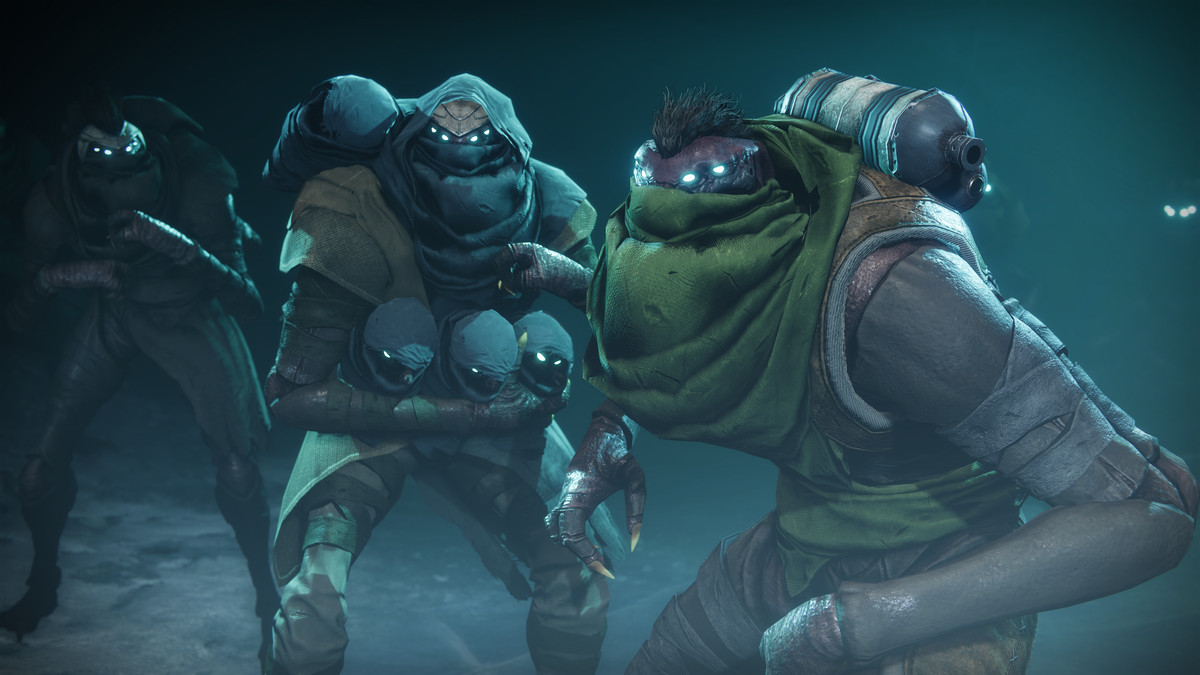
Image: Bungie
Hatred of the Fallen is even built into the lore of some of the greatest legends in Guardian history: fighters like Zavala, Lord Shaxx, and Saint-14 are principally known among Guardians and City residents for their stoic defense of the City at the Battles of Six Fronts and Twilight Gap (two major campaigns featuring the Eliksni), and Saint-14 especially is lionized for his dogged pursuit and killing of any Eliksni he could find.
So this decision — inviting the supposedly villainous House of Light to live under the protection of the Traveler, which they (paradoxically) worship — feels extremely unusual from a mere tactical consideration. Not only that, but it’s wild that the invitation comes from Ikora. In the past, her espionage group, the Hidden, produced a report that concluded, in part: “It should be stressed that one or two sympathetic outliers [among the Fallen] cannot be relied upon to erase the wrongs of past centuries, nor should their good-faith efforts to correct the sins of their forebears be taken as sufficient symbolic reparation.”
Future War Cult
The tension between humanity and the Eliksni is so thick you can cut it with a knife, but even though war between the two species has lasted through the centuries, the Eliksni hardly pose much of a threat to our Guardians at this point, scattered, disoriented, and morally conflicted as they are.
Portraying the tension between Eliksni and the City’s political representatives is where Bungie’s writing really shines in comparison to previous seasons. It models this new conflict between the residents of the City and the House of Light not on specific real-world conflicts, but on a general template: a group of people suddenly find that the Other is in their midst, and they try to oust the Others based on prior fears and new ones stoked by particularly demagogic opportunists. When it comes to bigoted grifting, Lakshmi-2, leader of the City-based techno-millenarian death cult, Future War Cult, is happy to play the role.
Future War Cult is one of the three principal Guardian Factions in the City, alongside New Monarchy (led by Executor Hideo) and Dead Orbit (led by Arach Jalaal). Each Faction has an overriding, if simplistic, ideology: Dead Orbit believes the only future for humanity is outside of the solar system, which is on the path toward extinction; New Monarchy believes that a single dictator should rule all of humanity instead of the current Consensus’s ostensibly democratic structure; and Future War Cult’s entire deal is their claim to be able to see the future, which is rife with conflict and war and requires everyone to be constantly prepared to fight at a moment’s notice.
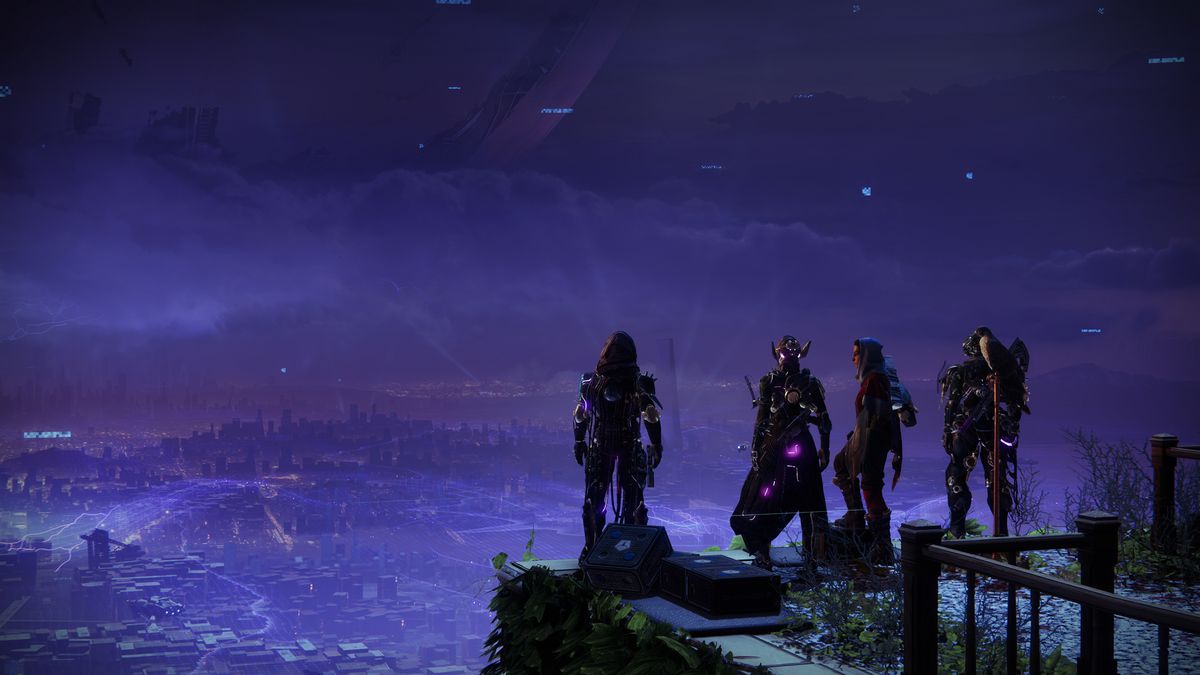
Image: Bungie
In Season of the Splicer, Future War Cult’s Lakshmi-2 claims to have seen a vision of the future where the “Skies [are] dark with smoke. [There is] shooting. Gunfire. And in the center of it all, standing in our City… A group of Fallen. The same Fallen I saw earlier.” Her implication is that the Eliksni of the House of Light are the primary cause and catalyst of a City torn apart. She claims the Vanguard has heard her report. But they refuse to listen, she says, because they’re more interested in protecting their image than the lives of the City’s residents. She positions herself as the only one willing to take action. Even in these initial private communications between her and our Guardian, Lakshmi-2’s rhetoric is that of a demagogue looking to further her ideology at the expense of peaceful coexistence.
Visions of disaster
In this way, Future War Cult is singing the same tune as a host of actual millenarian cults. Millenarianism, in brief, is an apocalyptic ideology concerned with the notion that the world is about to be significantly transformed by an abrupt and cataclysmic event. The idea, whether embraced by a mainstream church or secular cult, is that humanity will be shaped by whatever crucible this event brings with it, and your favorite millenarian cult, like Heaven’s Gate or Aum Shinrikyo, will emerge on the other side to lead the chosen ones who survive onward to a golden age. There are only two minor differences between Future War Cult and real-world cults: a cataclysm has already happened in the Destiny universe (the Collapse), and the arrival of another one isn’t far-fetched; and Future War Cult uses advanced technology to, they claim, actually look into the future.
We don’t know much about the so-called “Device” Lakshmi-2 uses to see the future, but we do know one thing: the technology to build it is Vex in origin and design. Astute readers will remember that the enemy we’re focusing on in Season of the Splicer is… the Vex. There’s reason to believe this device doesn’t work, but Lakshmi-2 maintains that it does. After all, as she will tell you repeatedly, she supposedly predicted the Cabal invasion that would trigger the Red War that kicked off Destiny 2.
As the season progresses, Lakshmi-2’s messages to us and to the people of the City intensify both in their demagoguery and in their xenophobia. Based on a vision of the future that she alone has seen, and playing on the fears and anxieties of a City that has historically seen war with the Eliksni, she riles up the people against both the Vanguard and the House of Light. Tensions mount to the point that a group of citizens sneak into the Eliksni refugees’ neighborhood and sabotage their infrastructure until they are stopped by Crow. The Eliksni Mithrax pleads with Lakshmi-2 to stop teaching the City to fear the House of Light; Lakshmi-2 responds by inviting Mithrax to find somewhere else to live if he doesn’t like the treatment his House is receiving.
Lakshmi-2 isn’t just working the people into a xenophobic lather. Behind the scenes, she is also conspiring with New Monarchy’s Executor Hideo to push a coup d’état against the Vanguard and radically reshape the ruling Consensus’s government. Because her vision, as it turns out, doesn’t end with the Eliksni of House Light standing in the middle of a decimated City — it ends with Lakshmi-2 standing atop the Tower, sole leader of the City. As the season progresses, we uncover the real mastermind behind the Vex’s Endless Night. We also confirm that Lakshmi-2’s vision might not be super trustworthy.
Prophecies
The lore tab for Stochastic Variable, an Arc submachine gun, includes the full text readout of this vision. It isn’t written like a “prophecy,” but rather a series of possibilities. This is how Vex prediction engines work; in Season of the Chosen, we discover that Ixel the Far-Reaching, one of the architects of the assassination attempt on Zavala, had used such a machine to see whether Zavala’s murder was even possible. The lore tab for Far Future, a legendary sniper rifle, includes the full readout of this “prophecy” (for lack of a better word) in a similar fashion to Stochastic Variable. Comparing the two prophecies, we see an extremely similar syntax, and crucially, a similar conclusion:
“Ixel : Primus : Far-Reaching : prophet : conqueror : hero”
“Lakshmi-2 : head of state : Exo : prophet : savior”
Speculating a bit, it doesn’t seem like these prophecies are actually impartial windows into the future. Instead, they feed into the desires of the non-Vex viewer. What did Ixel the Far-Reaching want? To be highly respected in Cabal society. How could they get that? By killing Zavala and currying the Empress’s favor. What does Lakshmi-2 want? Leadership over the City. How might she get that? By manufacturing a conflict between the people of the City, the asylum-seeking Eliksni, and the Vanguard, then taking power in the resulting vacuum.
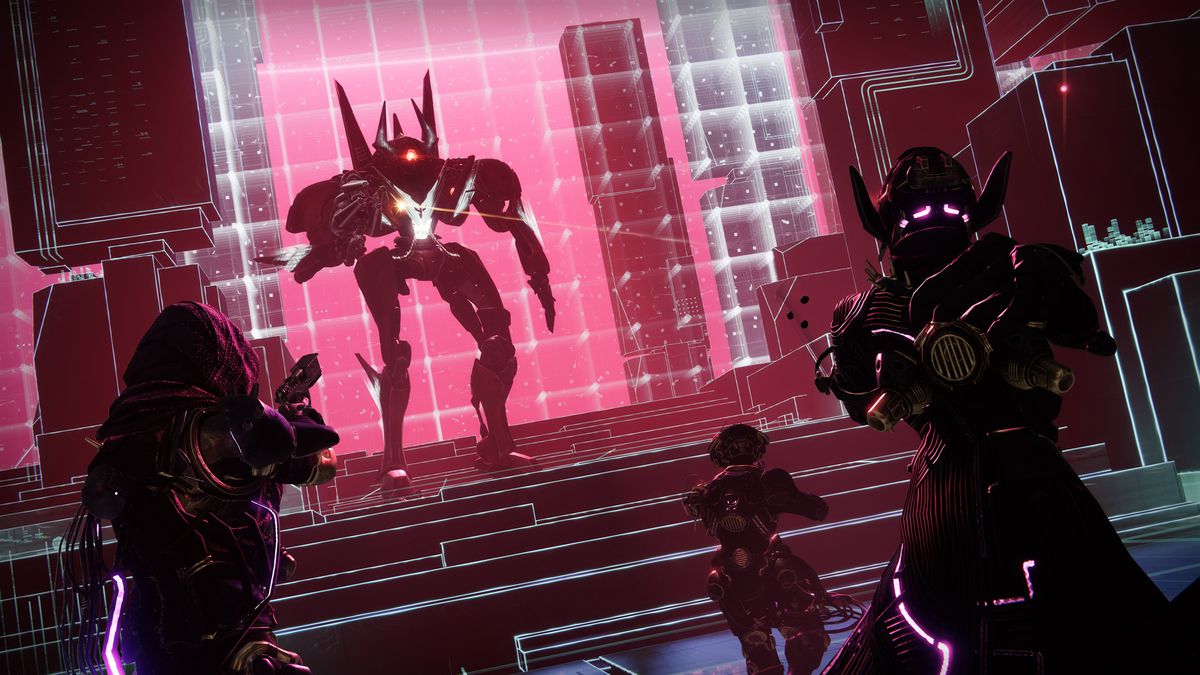
Image: Bungie
The other question to be asked here is: who does this possible future really benefit? If the Endless Night is caused by the Vex, and the Vex are essentially in control of these clairvoyance engines (in that they are in control of the simulation networks that ultimately predict the futures each so-called “prophet” sees), wouldn’t any result generated by the engines ultimately further the Vex’s end-goals? It gets worse: we found out mid-season that Savathûn, the Hive Witch Queen, is the true architect of the Endless Night through her Taken Vex proxy, Quria, the Dreaming Mind.
So, at the end of the day, Lakshmi-2 has been going on xenophobic tirades and nearly inciting anti-Eliksni and anti-Vanguard riots for eight weeks because of a prophecy she got from a machine that connects to a network controlled by a direct enemy and is at the very least manipulated by the story’s bigger bad. Not only that, but there’s evidence to suggest Lakshmi-2 might even be directly influenced by Savathûn herself.
In one of her messages to us, she asks if we have heard the song of the people: “Rise up as one, march towards the sun.” The lyrics to this song aren’t as important as the melody. It’s one we’ve heard Lord Shaxx sing, Crow whistle, and Eris Morn hum. It’s also one that played on the title screen every time we booted up Destiny 2 from October 2019 to November 2024. This is Savathûn’s song, and as Eris explains to the Drifter, it is a “viral chant” that, once heard, can never be unheard. It forges a link between Savathûn and the listener, one she can use to spy on her enemies, or to control them. When you take that with this unsettling lore entry from the “Beneath the Endless Night” lore book, and the discovery that Savathûn’s song has been encoded on the Future War Cult transmissions going out to everyone in the City, this “song of the people” takes on new, sinister implications.
Here’s the thing, though: as the Season of the Splicer slowly wraps itself up, it ultimately doesn’t matter whether Lakshmi-2 is being influenced — by a Hive god, a Vex mind, or otherwise — or whether she fully believes what she says. A great deal of demagogues and grifters, especially politicians, don’t always buy their own grift in private. What matters is that the people they’re grifting believe every word. While our Guardian and various members of the Vanguard might not have been taken for a ride, Lakshmi-2 remains an effective orator, and her promises of protection — again, whether they were bolstered by Hive mind-control magic or not — did resonate with the people of the City.
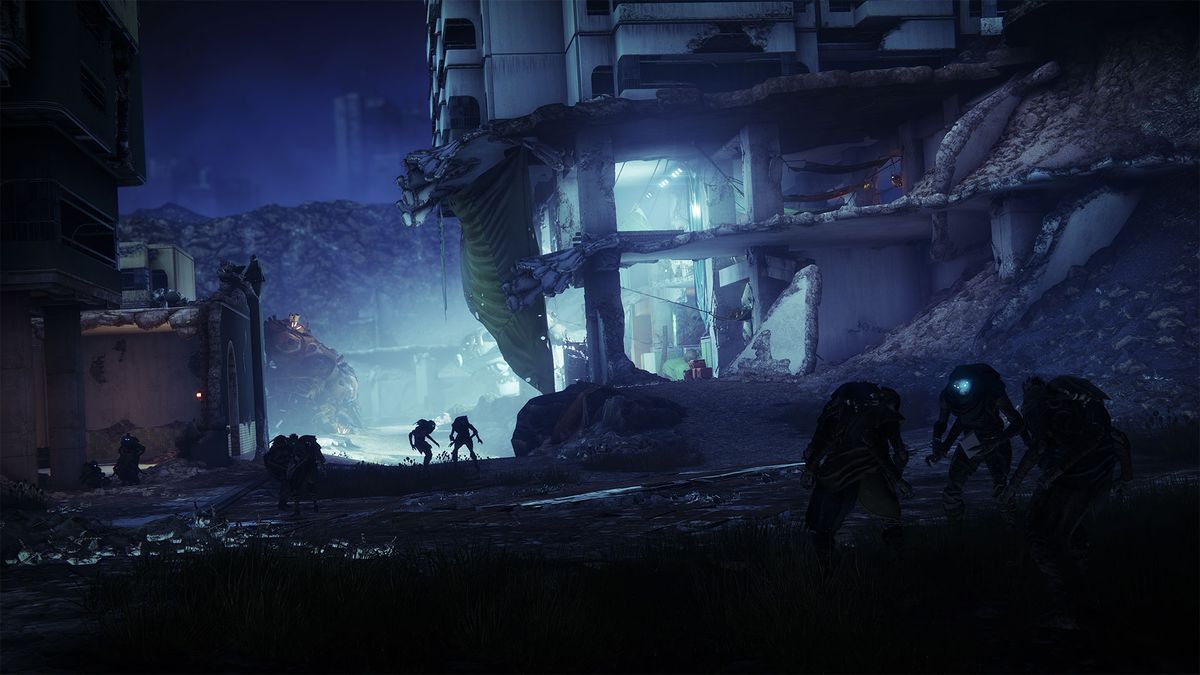
Image: Bungie
What tidings may yet come
As of this writing, we’re nearing the end of Season of the Splicer. We’ve defeated Quria, the Dreaming Mind, and the Endless Night has begun to disperse. The tension is decreasing, but there is still a bit left to go in this season. While we’re busy with the Solstice of Heroes until August, Lakshmi-2 remains unapologetic in both her demagoguery and her xenophobia. Other prominent Guardians, meanwhile, have gradually come to change their minds and welcome the Eliksni to the City, if only tentatively for now.
While we don’t exactly have a Vex prediction engine to make a prophecy about what’s to come for the rest of this season, Season 15, or beyond, our hope is that Luke Smith’s dream is in full effect, and that what we’ve seen — the good and bad — will have lasting implications past the season’s August end-date. Lakshmi-2 has been such a compelling tertiary antagonist this season in part because of the absolute master class in voice acting put on by Shohreh Aghdashloo (The Expanse, Marvel’s The Punisher), and because, while Destiny 2 has always straddled the line between science fiction and fantasy, it has always at least attempted to ground its character work in the kind of interpersonal dynamics we see in reality. And we’ve absolutely seen the kind of grandstanding xenophobe Lakshmi-2 personifies in real life.
Destiny 2 has undergone a sharp evolution in how it deals with the non-human species in its game universe even since November 2024, where one post-campaign mission had Vanguard Commander Zavala recommending tactics that looked an awful lot like Iraq War-era “shock and awe” strategies against the scattered and disorganized Eliksni left in the wake of our defeat of Eramis, Kell of the House of Salvation. With Season of the Splicer, we’ve not only had the opportunity to watch legends among Guardians (and ones specifically known for their enmity with the Eliksni) forge new relationships with old enemies, but we have gotten to actually learn about Eliksni spiritualism, to say nothing of their society as it is and as it was before their version of the Collapse threw their civilization into chaos.
It would be a genuine shame if, at the end of this season, or in the transition between Beyond Light and The Witch Queen, all of this good narrative work was erased in favor of the next Big Story Beat — of a less complicated and compelling return to sci-fi abstractions and fantastical justifications for its characters’ human failings. Hopefully, instead, Bungie will use this moment as a jumping-off point to forge a new narrative in Destiny, one where humanity isn’t besieged by every alien species in the Solar System, and where our new allegiances with those who are not like us aid in our fight against the Darkness. It would be genuinely cool to see a Destiny where different societies are portrayed not as simple enemies we shoot in droves, but as friends with complex relationships and others who hold the bright possibility of a truly multicultural, interstellar, cosmopolitan golden age in their hearts.
Polygon – All
Source link
Related Post:
- Here’s where Xur is in Destiny 2 today – Beyond Light, but not beyond Xur
- How House of Ashes Draws Upon Grudges and Rivalries to Deliver a Compelling Horror Adventure
- Far Cry 6 ‘isn’t a political statement’ on Cuba, narrative director says
- How China’s political influence is changing game development
- Facebook blocks Road 96 ad “for being political”
- Far Cry 6 Narrative Director: ‘Our Story Is Political’
- Five Nights at Freddy’s creator retires amid controversy over political donations
- Five Nights At Freddy’s Creator Scott Cawthon Announces Retirement After Political Donation Backlash
- Destiny 2: The Final Shape will mark the end of the Light and Darkness saga
- Destiny 2 Witch Queen Revealed as Savanthun Steps Into the Spotlight With Light-Wielding Hive Guardians; Season of the Lost Detailed
